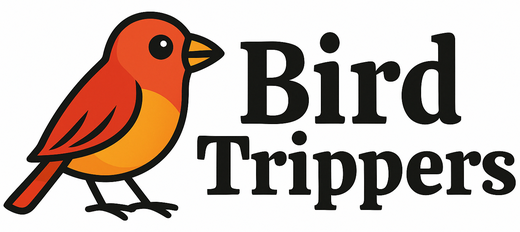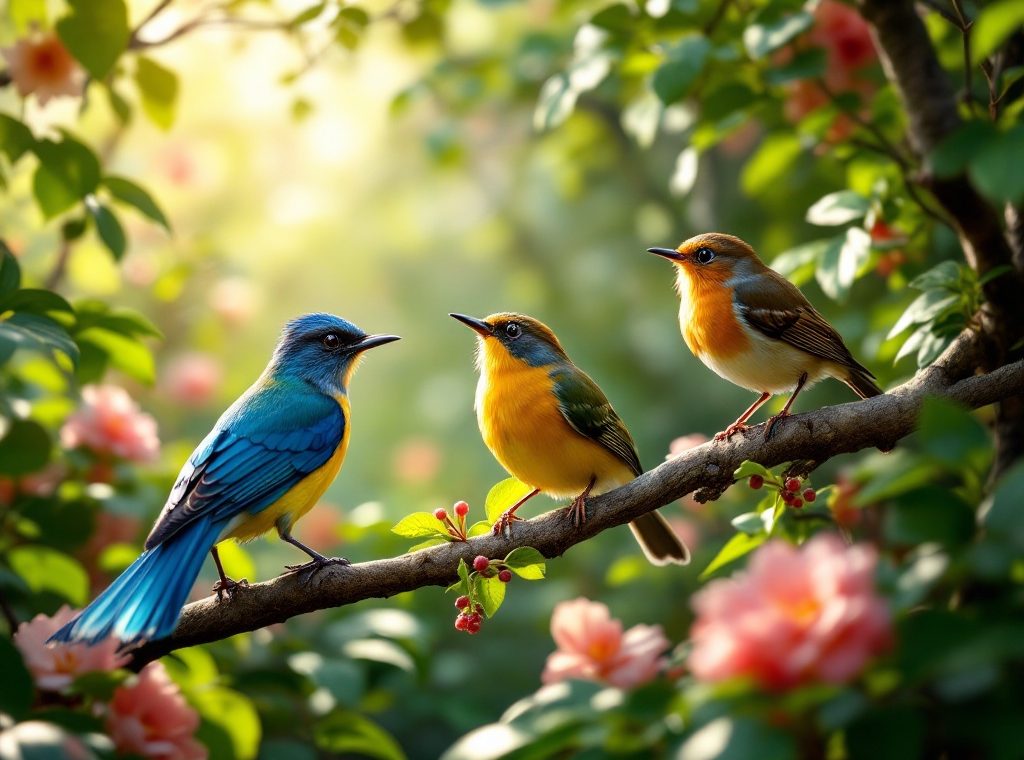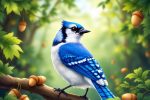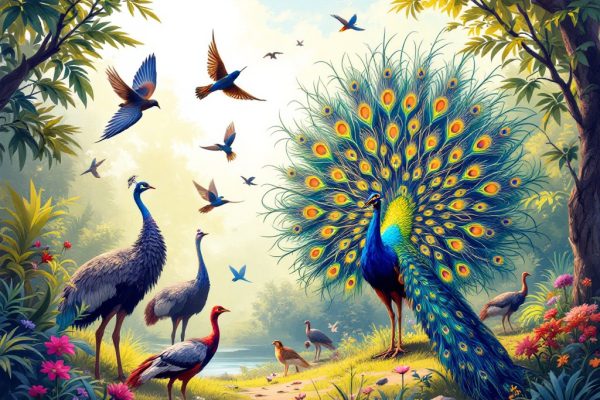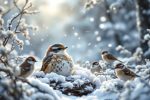Singing Birds with the Most Beautiful Songs
Do you find the songs of birds enchanting? Discover the fascinating world of avian music and learn why birds like the nightingale, lyrebird, and American robin produce such captivating melodies. Explore the science behind birdsong, from its purpose in communication and mating to the intricate ways birds learn and perfect their tunes. Uncover the secrets of identifying birds by their unique songs and learn how you can contribute to preserving these beautiful sounds for future generations. Begin your avian symphony adventure now!
Important information
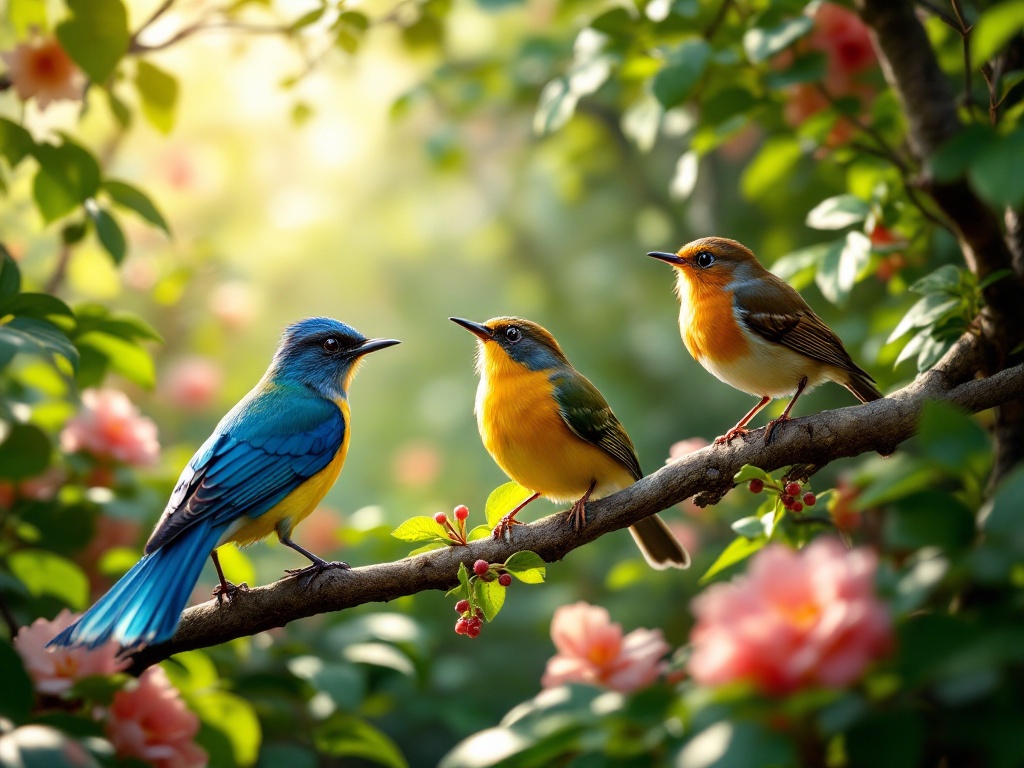
- Birds sing to attract mates, defend territory, and communicate warnings.
- The complexity, melody, and emotional resonance of birdsong contribute to its beauty.
- Learning birdsong involves listening, practicing, and perfecting unique melodies.
- Nightingales, wood thrushes, canaries, and robins are known for their distinctive songs.
- Protecting bird habitats is crucial for preserving the diversity of birdsong.
Introduction to Singing Birds with the Most Beautiful Songs
Bird songs transform the air into a symphony of beauty and meaning. These melodies are essential communication tools, far more than mere pleasantries. Birds use them to attract mates and fiercely defend their territories. For instance, the nightingale is renowned for its intricate and captivating song. Another virtuoso, the lyrebird, mimics sounds to compose unique melodies. Meanwhile, the cheerful tune of the American robin heralds the arrival of spring, while the common blackbird adds rich, flute-like tones to nature’s chorus. The song sparrow and eastern whip-poor-will also contribute their distinct voices to this avian orchestra.
What defines a beautiful birdsong?
Several elements contribute to the beauty of birdsong, including:
- melody,
- complexity, and
- emotional resonance.
Elements of birdsong
Melodic phrases create pleasing patterns, while intricate harmonies add depth. Variations in pitch, rhythm, and tone further enhance a song’s appeal. Even the setting plays a role; a serene morning or tranquil forest can amplify the perceived beauty of a bird’s song.
Understanding Melodious Birds and Their Vocalization
Birds sing distinct songs, each species boasting its own unique melody. These tunes are crucial for communication, allowing birds to connect with their own kind. Furthermore, their vocal repertoire expands by mimicking surrounding sounds. Learning these songs involves a process of listening, practicing, and perfecting the tune for effective communication and impressive imitations.
Why Birds Sing: The Purpose of Birdsong
Birds sing for various reasons, including attracting mates and defending their territory. Their complex songs convey nuanced meanings for effective communication. A male’s song can attract a female by showcasing his fitness and warn off rivals. Besides melodies, birds use simple calls for practical purposes like alarms or flock contact.
The Role of Vocal Communication in Nature
Birds sing for several crucial reasons. Their songs play a vital role in attracting mates and defending their territory. Calls serve as warnings about predators, such as hawks and snakes, and even contribute to building a sense of community among birds. For example, sparrows use calls to coordinate foraging activities. A complex song can also be a display of a bird’s fitness, signaling strong genes to potential partners, much like the impressive melody of a nightingale. These varied calls convey specific information, announcing food discoveries or warning of particular threats.
The Science of Birdsong
Birdsong is a captivating field of study, blending biology, behavior, and ecology. Scientists explore the mechanics of song production and the evolutionary forces that shaped it. Learning to sing is an intricate process for birds, requiring them to listen, practice, and ultimately develop their own unique melodies.
Why do birds sing?
Birds sing for a variety of reasons:
- attracting mates,
- defending territories,
- serving as warning signals.
Birdsong is a crucial communication tool.
Identifying birds by their songs
Identifying birds by their unique songs requires practice and careful listening.
- Recognizing patterns in pitch and rhythm is key,
- resources like online databases and field guides provide helpful audio examples for comparison and species identification.
Essential for survival and reproduction, birdsong allows these creatures to communicate, defend their territory, and find mates. It’s a complex and beautiful aspect of nature.
Bird Identification Through Song
Bird song identification involves discerning the unique melodies, pitches, and rhythms of each species. Online recordings and field guides provide invaluable audio examples for comparison. Timing also plays a crucial role. Consider the time of year, the time of day, and the bird’s habitat. For instance, some species only sing at dawn, while others favor particular environments. Sharpening your bird song recognition skills requires practice, careful listening, and patience. By learning the distinct songs of different birds, you’ll steadily become an expert.
Study available resources. Utilize online recordings and field guides, which offer invaluable audio examples for comparison.
Consider timing. The time of year, the time of day, and the bird’s habitat are crucial factors in identification. Some species sing only at dawn, while others prefer specific environments.
Practice consistently. Sharpening your bird song recognition skills requires practice, careful listening, and patience.
The Impact of Bird Conservation on Avian Music
Protecting birds preserves a chorus of unique songs. Unfortunately, vanishing habitats and a changing climate threaten these species. Safeguarding their homes ensures these melodies continue. Immediate action is crucial to saving this natural music.
Famous Songbirds and Their Enchanting Songs
Nightingales are known for their mesmerizing songs, intricate melodies that fill the night with over 1,000 distinct sounds. The wood thrush also has an impressive song, its flute-like notes echoing across North America. It’s often considered the continent’s most beautiful birdsong because of its ability to sing two notes simultaneously, creating a rich, complex melody.
Canaries, masters of imitation, easily learn and copy various sounds, including tunes and other birdsongs. Their vocal skills have been appreciated for centuries, making them popular cage birds.
Song thrushes weave environmental sounds into their unique, repetitive phrases, making them easily recognizable.
Linnets’ twittering songs, full of rapid trills and musical runs, have an important function: territorial displays, sending a strong message to rivals.
The hermit thrush’s ethereal, flute-like song, with its clear, spiraling notes, creates a lovely soundscape in peaceful forests.
Nightingales and Their Melodic Calls
Nightingales are renowned for their intricate and varied songs, which are composed of a rich diversity of musical phrases. Their music has long been a symbol of romance, inspiring countless references in literature and poetry, often representing love and beauty.
The Wood Thrush: North America’s Most Beautiful Song
The wood thrush’s flute-like song is considered by many to be the most beautiful in North America. This ethereal music is created by the bird’s ability to sing two notes simultaneously, producing a rich, unique sound that echoes through the forests, most often at dawn and dusk.
Canaries: Masters of Imitation
Canaries develop their melodies by imitating other birds, often their parents. They also incorporate surrounding sounds into their repertoire, such as musical instruments or human whistling. This mimicry results in complex and diverse songs.
The Imitative Song Thrushes
Song thrushes are renowned for their exceptional mimicry, which allows them to imitate a variety of other bird songs, effectively broadening their vocal repertoire. This distinctive skill expands their range of melodies and sets them apart in the avian world.
Linnets: Adding Thrills and Runs
Linnets fill the countryside with their sweet, soft songs, often incorporating thrilling runs into their beautiful melodies. Their music makes them a welcome addition to any rural landscape.
The Flute-like Sound of the Hermit Thrush
The hermit thrush’s song is a unique, ethereal experience, unlike any other thrush. Its flute-like notes spiral, rising and falling with captivating clarity. This creates a peaceful, evocative atmosphere in the woods.
Distinctive Songs of Notable Bird Species
The American Goldfinch, with its brilliant yellow plumage, adds a splash of color to open woodlands, fields, and gardens. Its cheerful song, a series of sweet, high-pitched warbles and twitters, often accompanies its flight.
The Asian Koel, distinguished by striking red eyes and contrasting feathers, announces its presence with a loud, repetitive “koo-Ooo.” This distinctive call echoes through both Asian forests and urban areas.
Across the Atlantic, the European Goldfinch shares this vibrant beauty, inhabiting similar environments and singing complex melodies punctuated by trills.
Famous for its rich, robin-like song, the migratory Rose-breasted Grosbeak graces North America. Its melodic phrases possess a clear, ringing tone, often marked by a distinctive upward slur.
Goldfinches: Beautiful Forest Dwellers
Goldfinches, with their vibrant colors and melodious songs, add a touch of brilliance to the forest. These cheerful birds significantly contribute to the woodland soundscape, enriching the tapestry of forest life and boosting biodiversity. They are a true woodland treasure.
The Distinctive Song of the Asian Koel
The Asian koel’s distinctive song, a loud and melancholic “koo-Ooo,” echoes repeatedly at dawn and dusk during breeding season.
Rose-breasted Grosbeak: Famous for Its Song
The rose-breasted grosbeak’s song is a smooth, rich melody, reminiscent of a robin’s, but with bursts of sweet, whistled phrases. This beautiful vocalization makes it a popular bird among birdwatchers.
Exploring Dynamic and High-Pitched Bird Calls
Thrushes are renowned for their intricate and melodic songs, employing a diverse range of notes. Sparrows also communicate with melodic calls, attracting mates and defending territories. Robins contribute to the soundscape with their dynamic and expressive songs, often heard at dawn and dusk.
Thrushes: Renowned for Their Beautiful Songs
Thrushes are renowned for their intricate and beautiful songs. These melodies play a crucial role in communication, allowing them to attract mates and defend their territories. For instance, the Wood and Hermit Thrushes possess uniquely ethereal songs, often compared to the sound of a flute. Each thrush species boasts its own distinct musical signature, contributing to a rich natural soundscape and enhancing the overall beauty of their environment.
The Melodic Calls of Sparrows
Sparrows utilize melodic calls to communicate and defend their territories. These cheerful songs resonate in diverse environments, from bustling cities to tranquil countrysides. The Song Sparrow, for instance, is renowned for its complex melodies, which are essential for attracting mates and establishing territorial boundaries. These songs also enrich the natural soundscape.
Robins and Their Dynamic Songs
Robins greet the dawn and dusk with their vibrant songs, imbuing gardens and parks with cheerful melodies. Their distinctive tunes serve several key functions: attracting mates, defending territory, and communicating with other robins.
